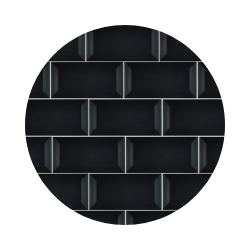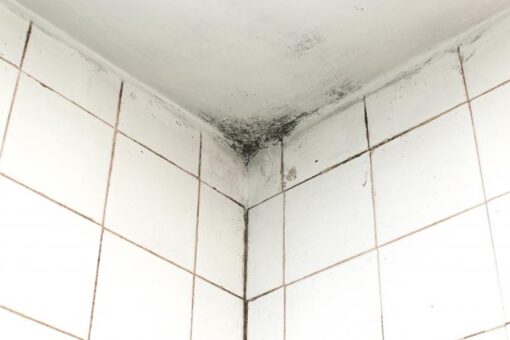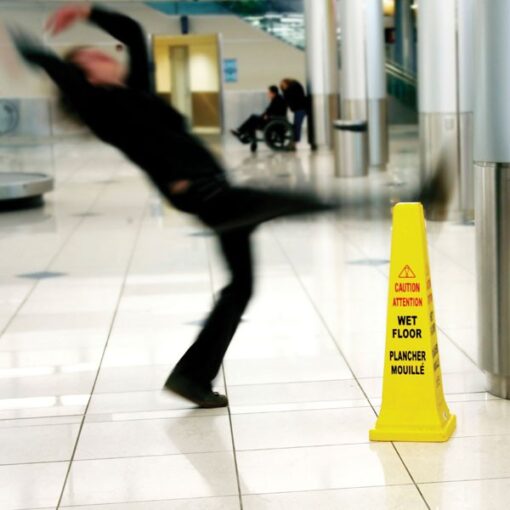Compared with residential floors, commercial flooring spaces usually face more demanding conditions, as they experience much higher traffic and potentially face serious legal threats when accidents occur. While ceramic and porcelain tile floors are great for durability and functionality, taking care of them in a commercial environment such as a restaurant, public bathroom or highly trafficked walkway can be challenging.
Here are the five biggest issues that businesses and property managers face in maintaining their tile floors. Keep this in mind when advising on tiles and grout for shops, hotels, restaurants and other commercial spaces.
Dirty Grout
 Stained grout is one of the most common grout issues in commercial settings, particularly in bathrooms and in restaurants where spills from food, oils and other contaminants are common. Due to the porous nature of grout and the fact that it is recessed below the surface of the tiles, it is both difficult to get to and can retain bacteria that sits beneath the surface.
Stained grout is one of the most common grout issues in commercial settings, particularly in bathrooms and in restaurants where spills from food, oils and other contaminants are common. Due to the porous nature of grout and the fact that it is recessed below the surface of the tiles, it is both difficult to get to and can retain bacteria that sits beneath the surface.
Mops only move bacteria around and in bathrooms, bacteria feeds on urine and spreads. A Harris Interactive poll found that 79 percent of customers would not return to an establishment with a bathroom that they consider to be dirty. The numbers aren’t much better for dirty floors in other areas and these numbers do not account for the loss of reputation associated with unclean tile floors.
Bacteria and dirt trapped in grout lines not only looks bad but can retain unpleasant odors from spoiled foods, urine and unhygienic bacteria. Many cleaning solutions do not fully clean grout lines and can create additional discoloration as well as permanent damage. Hygiene concerns associated with this harmful bacteria are particularly a concern for health care facilities, restaurants and schools.
Stained, Discolored or Dirty Tiles
When tiles are porous, they will usually stain, most often, permanently. Textured tiles will retain ground dirt in the surface of the tiles. Some cleaning products and processes can assist with managing the problem but will not eliminate it. Tiles can also grow to have a cloudy appearance on the surface. This usually means the wrong cleaning product for that type of tile has been used. In other cases, if a sealer has been applied to tiles incorrectly, if a poor product has been used, or if the product has been applied to non-porous tiles it can cause a milky white appearance on the surface. In these situations, the sealer must be professionally stripped and redone. However, there is the chance of permanent tile damage occurring in these cases.
Mouldy Grout Lines
Shower and bathroom mould growth is probably the most common and frustrating tile and grout related problem. Mould is a product of wet, humid conditions. Rooms with poor ventilation provide the perfect breeding ground for mould. Soap residue and body oils also create a food source for mold to grow.
Quite often, mold growth in showers and bathrooms is caused by a leak somewhere in the recess. A small hole in the grout or cracks in the shower corners is likely to cause water build-up and mould growth.
When mould develops in porous grout joints, no amount of scrubbing with heavy chemicals will resolve the problem in any sustained way. In fact, using mold-killing chemicals actually damages grout by disintegrating it, creating a far worse problem.
Difficulty Cleaning / Dull Looking Tiles
This is a common issue that generally comes from one of several factors. Often it’s because the wrong cleaning products are used.
It is important to seek professional advice as to which cleaning products are right for your particular type of tile.
Another issue has to do with dirt that simply will not come up with standard cleaning products or has been so deeply ground into the porous tile surface that it cannot be removed without causing permanent damage to the tiles. In these cases, tiles have a dull or darkish appearance that simply isn’t attractive. Finally, the use of mops is perhaps the most common mistake used by cleaning crews. Mops simply move dirt around and do not create a clean surface. This has the same aesthetic effect and is generally unsanitary.
Slipping and Falling Risks
The danger of slip and fall accidents is particularly high on tile floors. In restaurants, bathrooms and anywhere moisture from outside might be tracked in by foot traffic, slip and fall concerns run high. Especially with large tiles, there is a good chance that feet will slide on these wet surfaces and create accidents. This is a huge liability for commercial properties and one that often is not considered until after floors are installed and problems begin to occur.
Talk to one of our Tiletoria sales consultants for the best advice on what tiles to use in commercial spaces, as well as the best grout and adhesives for your project application.









